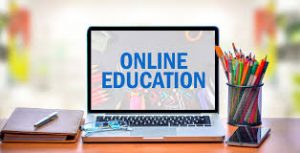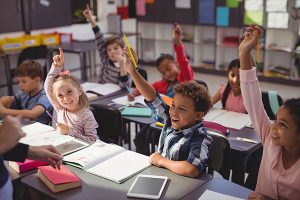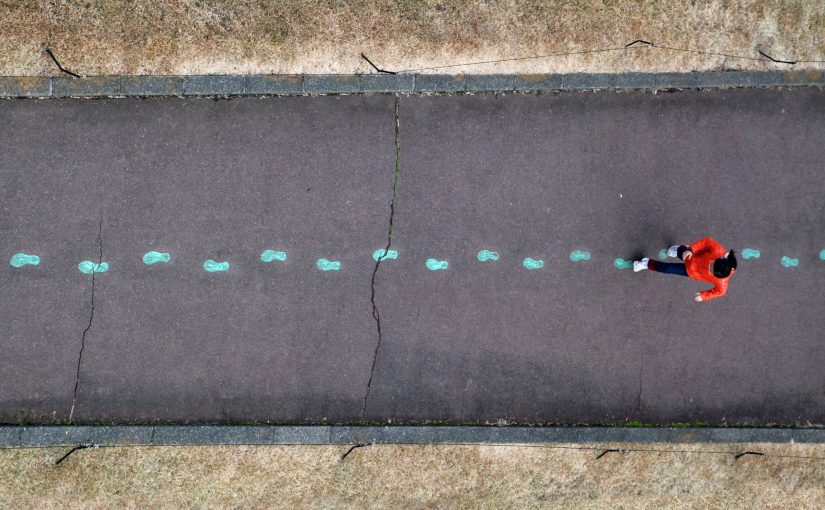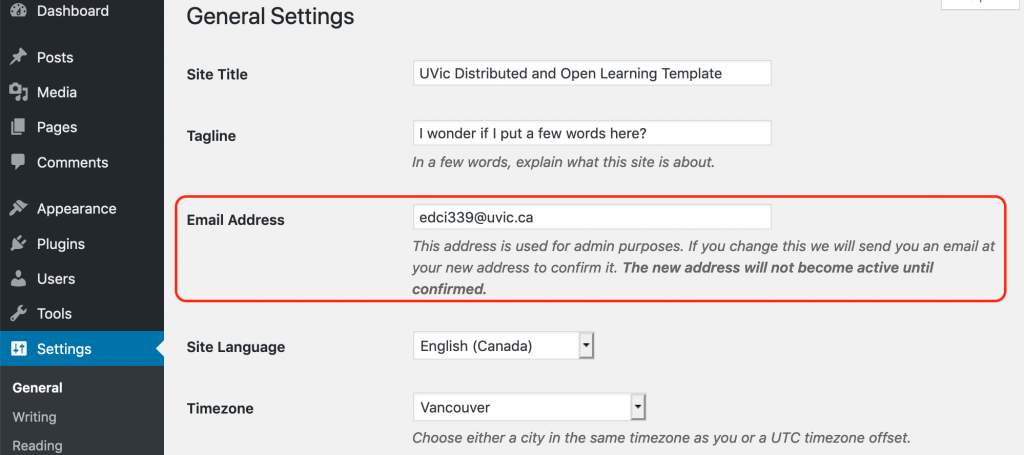The future of open and distributed learning
With the continuous maturity of internet technology, Information Engineering and other technologies, future learning will become more open and flexible, and distributed learning is also an inevitable trend in the future. In the future, the teacher-student role relationship will also change with a more open and distributed learning approach. Modern school teaching is moving from the classroom teaching mode in traditional classrooms to a spatially discrete mode that brings together multiple paths of knowledge transfer.
With the continuous influence of information technology on education and teaching practice, we can’t help but imagine the classroom in 2040. As a outstanding representative of media information technology’s intervention in teaching practice, the new teaching picture of teacher-student interaction presented by distributed learning gives us with the shape of a future classroom. The so-called future classroom refers to a new classroom form oriented to social development and individual needs. Since it is future-oriented classroom teaching, it will always reflect the general trend of technological development, which means the requirements of social and personal development for teaching practice together tells the shape of future classrooms.
Then, with the condition that the boundaries of various disciplines are gradually broke and the knowledge system is broke up, the classroom and teaching of schools in the future need to have the characteristics of subject synthesis. The goals and processes of learning will be designed around problem solving. Student learning and teacher teaching reflect a trend of interdisciplinary integration. In educational practice, school education and teaching should focus on whether students can find the individual’s exact goals for learning and development in learning (Selwyn, 2020). Which means an important mission of the current classroom teaching reform is to pay more attention to students’ self-learning and development of the meaning and ability building on the basis of knowledge learning. The feature is that it has broken the various orders of the traditional society in the past. The production and dissemination of knowledge has changed from a teacher-student order to a disordered one. However, faced with the new trend of education and teaching activities, some people are panicked and believe that the wisdom of individuals are continuously beat by artificial intelligence, and their own values and meanings are constantly being dispelled. However, the ordering of school knowledge and the disordering of social knowledge is not a matter of right or wrong, but a fact that is happening every day in reality. School education and teaching need to make corresponding responses to social progress and change. Change can provide better education services for social development.
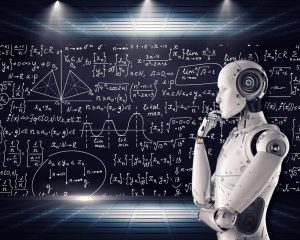
By 2040, students will be more free and open in class, and learning time will no longer be limited to the classroom. Students can break free from the limits of school. Personal development will be able to be more free and personalized. The learning process is no longer controlled by the teacher, but by the students themselves. So moving from “teaching” to “learning” will be the basic characteristic of future education. In future schools, there will no longer be such unified textbooks, and standardization, personalization, and customization will become the future learning direction. Now every school is a closed closed loop or a relatively closed “kingdom”, but the future learning center will be a round island, students connected with each other.
By 2040, students will be more free and open in class, and learning time will no longer be limited to the classroom. Students can break free from the limits of school. Personal development will be able to be more free and personalized. The learning process is no longer controlled by the teacher, but by the students themselves. So moving from “teaching” to “learning” will be the basic characteristic of future education. In future schools, there will no longer be such unified textbooks, and standardization, personalization, and customization will become the future learning direction. Now every school is a closed closed loop or a relatively closed “kingdom”, but the future learning center will be a round island, interconnected with each other.

A real learning community will appear. In 2040, we will have a general learning center. This learning center will choose different schools to cooperate, and a student can study in different schools, thus forming a learning community together. The biggest feature of distributed storage of learning resources is that it increases the channels of knowledge access, reduces the time and economic cost of acquiring information and knowledge, and guarantees the possibility of students’ freedom of learning from the root. In distributed learning, students have the great right to choose knowledge and content independently. Under the guidance of the same learning goals, learners can choose different learning materials and path methods to complete the learning goals.
For example, the study of foreign languages is taken as an example (Ally, 2019). Traditional foreign language learning is mainly the knowledge and ability of students to learn about the “listening, speaking, reading, and writing” of a language under the guidance of school foreign language teachers. In distributed learning, learners can use online and online Various learning resources, fully collect relevant learning materials and guidance strategies, and combine self-study and seeking guidance from relevant teachers, experts or peers to effectively complete the goals and tasks of foreign language learning. Students can choose courses at different schools, they can also choose each other, and teachers can provide guidance across schools. The future study center time is flexible. The school is open 24 hours, no summer and winter vacations, no weekends, and students will arrange study time according to their needs.
Teachers in schools will be more open and diverse in the future. After the knowledge is networked, the smartest person in the room is definitely not the teacher who stands in front of the whiteboard and gives you lessons, but the wisdom of all people. In other words, future learning centers will no longer rely on traditional teachers. The school will have some of its own teachers who have the advantage of the learning center. However, most courses can be purchased, and educational resources can be used across schools.
Examinations for future learning centers will move towards description, diagnosis, and consultation. A very important feature of big data and artificial intelligence is that it will track and record all the learning processes of students. It will find your learning process and the difficulties and points of learning. It will help you adjust the learning process in time and help you achieve better learning effect. It is no longer a simple evaluation for you, giving you a simple score. Each person makes his own course and study plan, and the evaluation is also for the individual, and it is not an education that compares him with others. Each child develops his or her own lesson plan, and the content of each child ’s iPad is different. With the development of virtual and augmented reality technology, in 2040, students can bring VR glasses and immerse themselves in books through smart terminals. Teachers can make virtual field trips flexible and applicable to teaching content. The videos that students watch are the same, and the specific explanations of the teachers are changed (Gao,2019). By taking advantage of the modern technologies of the Internet, cloud computing, and big data, we create a 3D-based virtual learning environment, scenarios, and conditions that can fully reflect the learning subject’s emotions, operating behaviors and thinking participation, so that students can be realistic and close to the real In this context, learn easily, joyfully, and efficiently to create a new form of educational development based on 3D virtual reality technology that reflects the core concepts of innovation.

In the future, no matter what age stage and education level students are, they are not learners all the time, so the age range of students has been expanded, and each student is a lifelong learner (Raspopovic, 2017). In the age of digital education where media and information technology is highly involved, the combination of interdisciplinary has been called the needs of the times, and the ability of education as the transfer of cultural knowledge in disciplines is gradually weakening. The lifelong learning and development of students facing the needs of future society is mainstream. The traditional role of students, whose main content is the knowledge of learning systems, has gradually changed to face the needs of future society and serve the new characteristics of students’ own development.
In distributed learning, all knowledge is being presented to any individual through terminal devices such as televisions, computers, and smartphones, regardless of country, subject area, and level (Sigri,2010). Students of different regions, ages, and majors can easily access The same media tools have obtained the same knowledge and information. It can be said that for the first time, human beings have gained equal rights in terms of access to knowledge. Through the correlation between knowledge and learners in different periods, it can be found that the traditional teaching model that increases the breadth of students’ knowledge with systematic learning and extensive memory has obviously been impacted by the social trend of information explosion (Downes,2017). In this knowledge environment, the capacity of individual memory and the way to obtain information are gradually depreciating. The most important thing a person learns is the method of learning. The ability to use systems thinking logic to learn to process and integrate massive amounts of information will become increasingly important.
References:
Ally, M. (2019). International Review of Research in Open and Distributed Learning. Competency, 20(2).
Ally, M. (2019). Competency profile of the digital and online teacher in future education. International Review of Research in Open and Distributed Learning, 20(2).
Downes, S. (2017). New models of open and distributed learning. In Open Education: from OERs to MOOCs (pp. 1-22). Springer, Berlin, Heidelberg.
Gao, C., Bai, Y., & Goda, B. (2019, September). Are We Ready for a VR Classroom? A Review of Current Designs and a Vision of Future Virtual Reality Classrooms. In Proceedings of the 20th Annual SIG Conference on Information Technology Education (pp. 39-39).
Raspopovic, M., Cvetanovic, S., Medan, I., & Ljubojevic, D. (2017). The Effects of integrating Social Learning Environment with online learning. International Review of Research in Open and Distributed Learning, 18(1), 142-160.
Sigri, U. (2010). The paradigm shift in educational management: An evaluation of distributed learning as future approach. TOJET: The Turkish Online Journal of Educational Technology, 9(2).
Selwyn, N., Hillman, T., Eynon, R., Ferreira, G., Knox, J., Macgilchrist, F., & Sancho-Gil, J. M. (2020). What’s next for Ed-Tech? Critical hopes and concerns for the 2020s.

